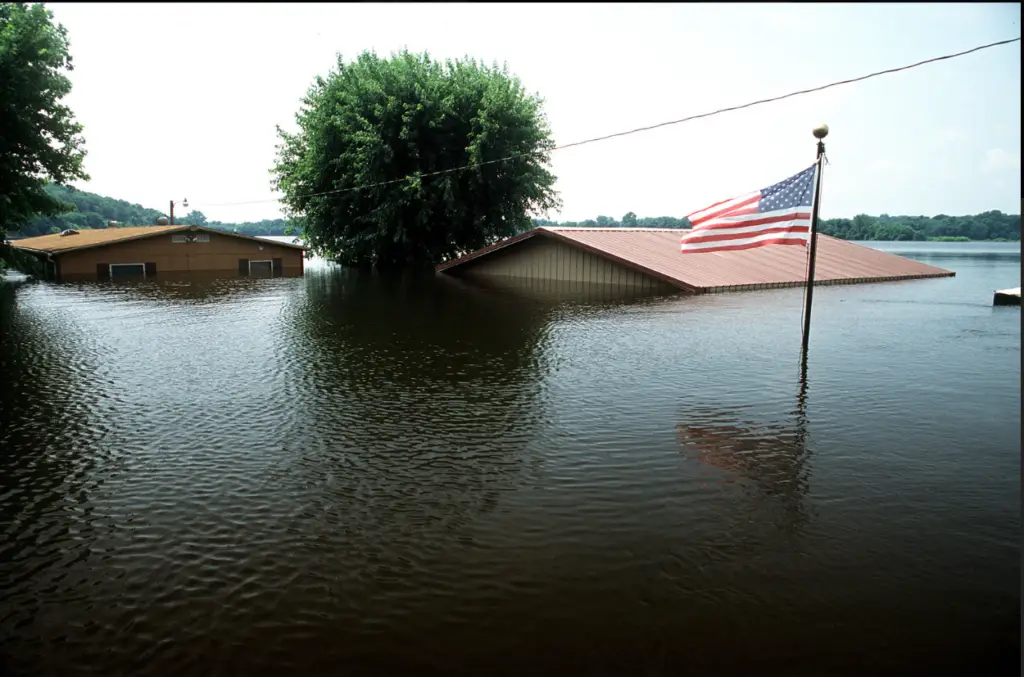Rising sea levels, prolonged droughts, wildfires and flooding are some of the very many effects of climate change on our planet today. The World Meteorological Organisation reports that Climate-related hazards have occurred every day over the past 50 years resulting in over a hundred deaths and causing a loss of about 202 million dollars daily.
Climate change has in recent times caused the destruction of homes and properties. In the US, about 15 million homes across the country were ravaged by wildfires, hurricanes and tornadoes in 2021 alone costing an estimated 56.9 billion dollars.
The urgency to mitigate climate change has become more prevalent as more people are losing their homes to natural disasters resulting from climate change. According to reports from Reliefweb, 167million homes risk being lost to climate change by 2040 if extreme weathers continue at current rates.
How do homes get destroyed by climate change?
Climate change has caused the destruction of homes in the following ways:
1. Increased flooding
Floods have increased in recent times, particularly in the Northeast and midwestern parts of the United States. This is a result of heavier rainfalls, however, some parts of the united states also have lower rainfalls.
Large floods can destroy homes and displace inhabitants by leaving buildings submerged in water for extended periods. Buildings that are submerged in water for a long period can develop a weakened foundation. Flooded houses also have the risk of dangerous electrical malfunctions and can create a conducive environment for the growth of microorganisms.
Flooding also affects future housing prospects by limiting land space where houses can be built thereby reducing the possibility of housing development.
Also read: Ways to help fight climate change
2. Coastal flooding
Coastal flooding happens when the sea level rises causing surrounding land to be submerged in seawater. In recent years, coastal flooding has intensified as a result of climate change.
Coastal flooding can flood beach houses and communities situated around the coast leaving people homeless. More negative is that seawater has a high salinity level and could destroy the oxide film on metals causing them to corrode faster. Houses with metal fittings will require complete repairs after such floods amounting to high costs.
Coastal flooding also threatens the existence of cities such as New York, New Orleans and many other cities in America and Asia. This could mean that without proper intervention, cities could be buried under the sea in the near future, leaving communities homeless.
3. Severe wildfires
Many parts of the world have experienced increased wildfires in recent years. Countries like Australia experience regular wildfires that burn useful land, destroying animal habitats and people’s homes in the process. Oftentimes, these wildfires are caused by humans however, many of these fires are triggered by climate change effects.
Increased drought caused by warmer and drier climate conditions is capable of triggering wildfires. Also, electric charges from lightning are also capable of triggering a wildfire.
In the US, approximately 70,000 wildfires are documented each year since 1983 according to the National Interagency Fire Centre. These wildfires destroy homes along with farmlands as reported in a Congress Research Service publication.

impacts of the damages on homes caused by climate change
1. Renders people homeless
Damages caused to buildings by the effects of climate change render people homeless. This is mostly true for casualties in structures that have been destroyed in wildfires.

2. Can lead to ill health and even death
It is an established fact that flooding and wildfires can lead to death by drowning or burning. These disasters also pose higher risks that could also kill people in the long run. Weakened building foundations due to flooding can cause buildings to collapse resulting in casualties.
The psychological effects of losing one’s home to fire or flood are also one to be dealt with.
3. Increases costs
Homes that have been damaged by floods or other natural disasters often require repairs. In some cases, the building will need to be destroyed and rebuilt. This can be very costly to carry out.
Changes may also need to be made to other existing structures and new housing areas may be shifted to new sites to avoid flood-prone areas.
4. Threatens the availability and cost of insurance
Home Insurance companies have begun to increase the cost of insurance due to the frequency of destroyed homes caused by natural disasters. This could leave some insurance companies with losses and may force them out of business.
The higher costs of home insurance may also mean that only fewer people may be able to afford to get insurance.
Final Words
Climate change has become a threat to our planet with people and animals alike experiencing devastating effects due to its impacts. With increasing bushfires and flooding, many people have been rendered homeless. Animal habitats have been destroyed and there has been a decline in plant and animal biodiversity.
This calls for adaptation and mitigation strategies to limit the effect of climate change on our planet and collective prosperity. While some strategies such as SDG 13 have been put in place to combat climate change, more efforts still need to be invested to ensure that our planet and the lives on it are protected.
Related posts:
- Harnessing the Power of the Sun: A Guide to Solar Installation - February 12, 2024
- Vacuum Trucks: The Unseen Heroes of Waste Management and Their Environmental Benefits, Featuring McDonald Farms - December 11, 2023
- Satellites And Climate Adaptation: Solutions From Space - December 1, 2023







3 thoughts on “Can Climate Change Destroy Homes? 4 Impacts of its Damage”